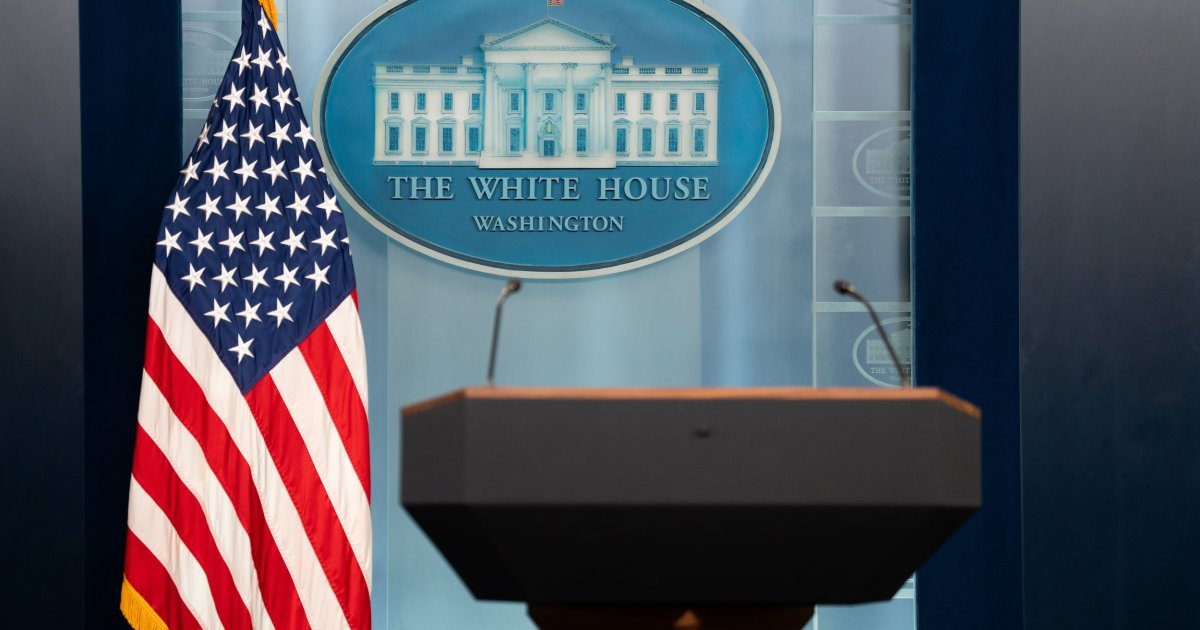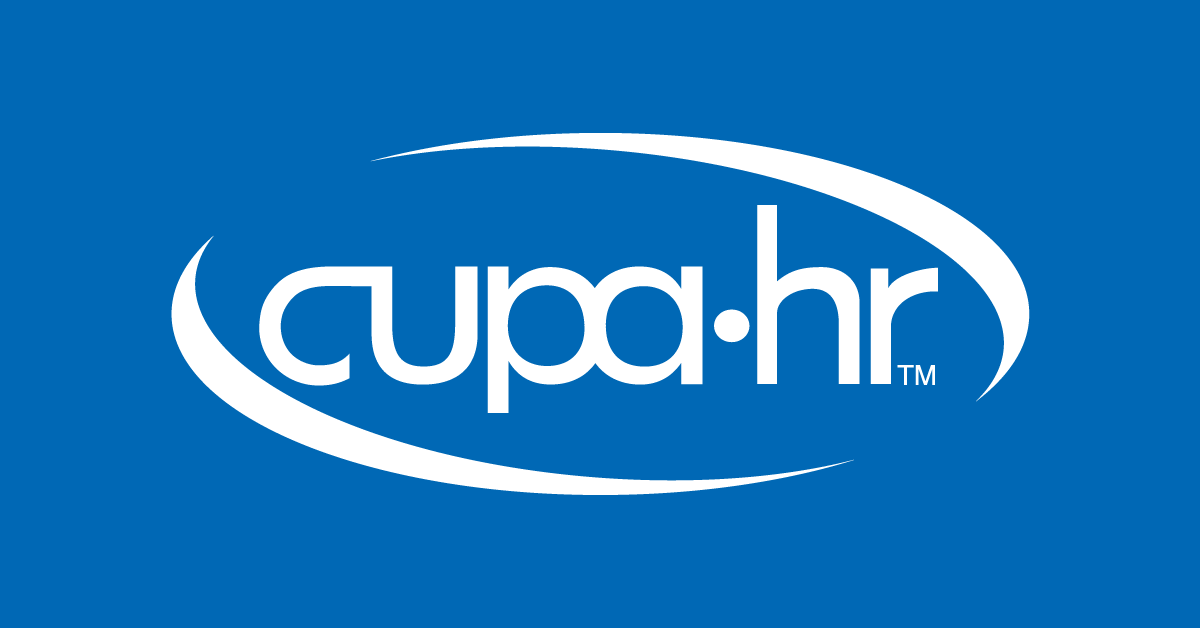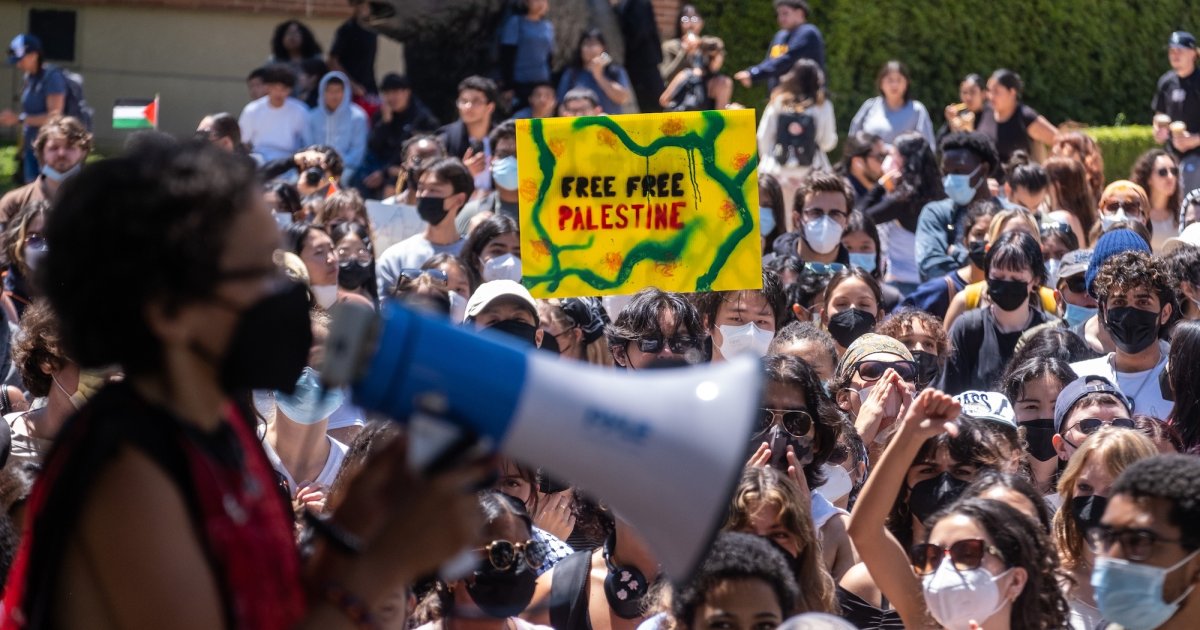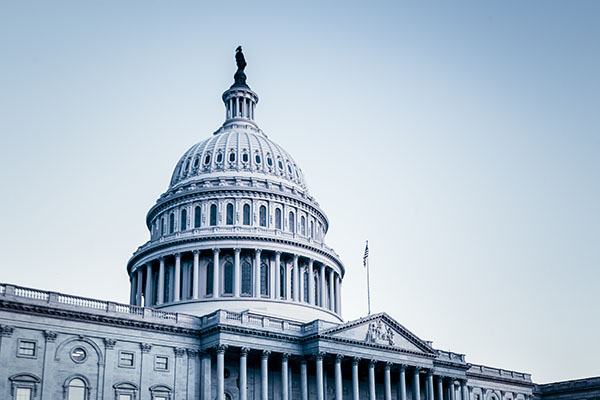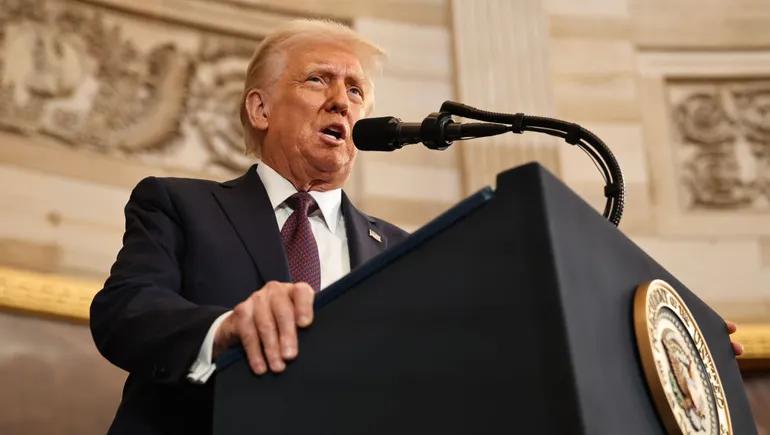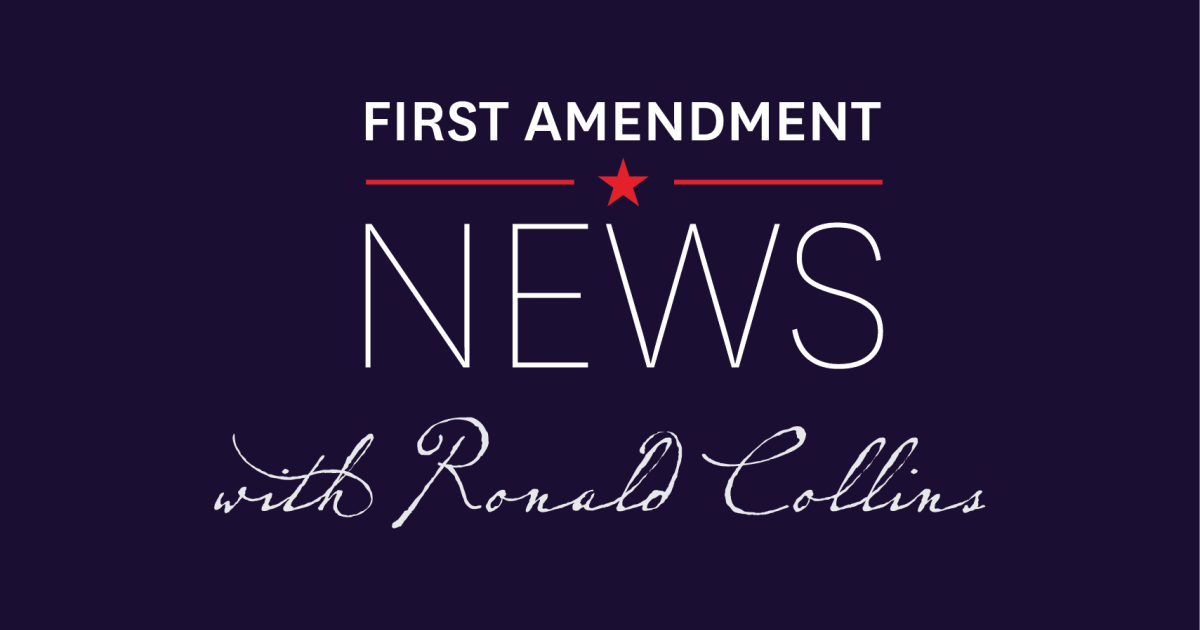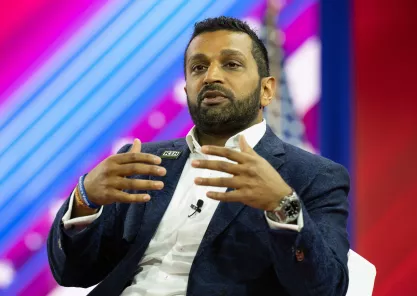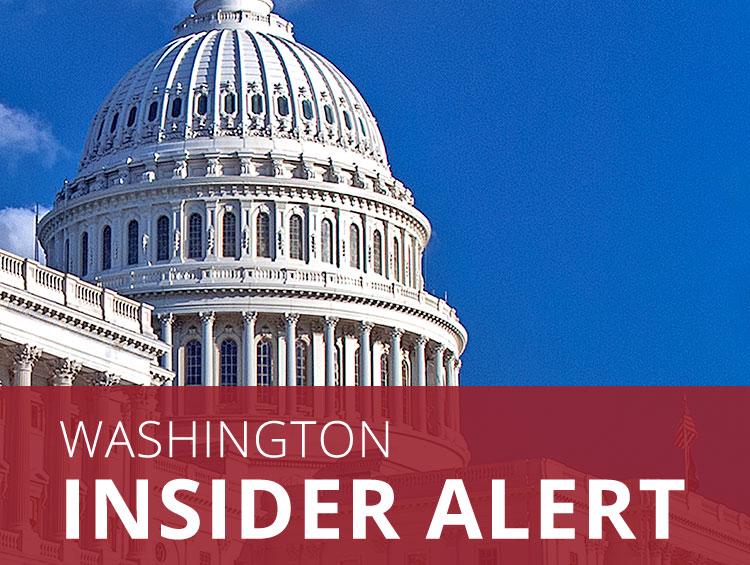Since taking office for his second term on Jan. 20, President Trump has issued a flurry of executive orders, including several implicating the First Amendment and freedom of expression. Below, we highlight some of these orders and evaluate the potential ramifications for free speech.
Executive order on protecting freedom of speech is a good start — but more must be done
One of the first executive orders the president signed was titled “Restoring Freedom of Speech and Ending Federal Censorship.” This order aims to “secure the right of the American people to engage in constitutionally protected speech” and “ensure that no Federal Government officer, employee, or agent engages in or facilitates any conduct that would unconstitutionally abridge the free speech of any American citizen.” Specifically, the order notes the government has “trampled free speech rights by censoring Americans’ speech on online platforms, often by exerting substantial coercive pressure on third parties, such as social media companies, to moderate, deplatform, or otherwise suppress speech that the Federal Government did not approve.”
FIRE welcomes this order’s call to end federal government censorship, including that which is hidden from public view. Leaks, court documents, and other disclosures have revealed instances of federal officials pressuring social media companies to limit controversial but constitutionally protected speech on vigorously disputed topics like the origins of Covid-19, the Hunter Biden laptop story, and election integrity.
We have written repeatedly about the dangers of such government coercion, commonly referred to as “jawboning,” highlighting how this sneaky form of government censorship threatens freedom of expression.
A pledge by the executive branch to respect the free speech of all Americans is a good first step. But any executive order can be modified or reversed on the say-so of one person — the president. It will take actual legislation — such as FIRE’s model transparency bill — to create mechanisms that statutorily require disclosure and bring to light governmental efforts to strong-arm private social media companies into censoring protected speech.
In the meantime, FIRE will monitor the administration’s actions, just as we did during the Biden administration, and hold federal agencies to the standards set forth in the executive order.
Executive orders targeting DEI programs appear to avoid First Amendment pitfalls — but FIRE will be watching their implementation
President Trump also signed two executive orders with the aim of dismantling diversity, equity, inclusion, and accessibility programs. The first, signed on Jan. 20 and titled “Ending Radical and Wasteful Government DEI Programs and Preferencing,” calls for “termination of all discriminatory programs, including illegal DEI and ‘diversity, equity, inclusion, and accessibility’ (DEIA) mandates, policies, programs, preferences, and activities in the Federal Government, under whatever name they appear.”
DEI/DEIA programs and initiatives take many forms. FIRE has no position on the values DEI programs may seek to advance. But our experience defending student and faculty rights on campus demonstrates that DEI administrators and offices have regularly been involved in threats to academic freedom and speech policing, functioning as a way to enforce preferred orthodoxy or ideology. And some DEI initiatives — such as mandatory DEI statements in faculty hiring or student admissions — flatly threaten free expression and academic freedom and should be prohibited. We have previously introduced model legislation designed to eliminate such use of political litmus tests in faculty hiring and student admission decisions.
FIRE has also seen legislation in which overbroad attempts to curtail DEI mandates threaten the very same speech rights of faculty and students they aim to protect. Overbroad restrictions can improperly limit classroom discussions — as we saw in West Virginia’s recent executive order prohibiting faculty from sharing any material that promotes or encourages certain DEI-related views, while at the same time permitting criticism of those views. This allows institutions to continue ideological litmus tests as long as such tests oppose DEI — which just recreates the same problem.
Overzealous enforcement could threaten free speech by, for example, indirectly chilling a professor from sharing their positive views of affirmative action policies or leading to investigation of a government grantee for a social media post expressing personal support for DEI initiatives.
The president’s executive order appears to avoid these issues by targeting only the government’s own speech and initiatives, which it can constitutionally control. For instance, the Office of Management and Budget must provide a list of “Federal grantees who received Federal funding to provide or advance DEI, DEIA, or ‘environmental justice’ programs, services, or activities since January 20, 2021.” This is different from prohibiting any federal grantees from promoting DEI, which would threaten speech. Instead, the order specifically targets federal grants made specifically for the purpose of advancing DEI, and the federal government is free to shut off that funding if it no longer wishes to advance those ideals or views.
A second DEI-related order, signed on January 21, “Ending Illegal Discrimination and Restoring Merit-Based Opportunity,” aims to eliminate “affirmative action” and “illegal discrimination and illegal preferences” in line with the Supreme Court’s decision in Students for Fair Admissions v. Harvard, which held race-based affirmative action programs in college admissions violated the Fourteenth Amendment. (FIRE takes no position on affirmative action.)
FIRE releases statement on the use of ‘diversity, equity, and inclusion’ criteria in faculty hiring and evaluation
News
FIRE’s statement provides guidance to universities to ensure they respect faculty members’ expressive freedom when seeking to advance DEI.
The order helpfully includes two provisions that make clear it does not reach into the college classroom or infringe upon academic freedom:
(b) This order does not prevent State or local governments, Federal contractors, or Federally-funded State and local educational agencies or institutions of higher education from engaging in First Amendment-protected speech.
(c) This order does not prohibit persons teaching at a Federally funded institution of higher education as part of a larger course of academic instruction from advocating for, endorsing, or promoting the unlawful employment or contracting practices prohibited by this order.
While these orders avoid constitutional pitfalls on their face, implementation should proceed carefully. Overzealous enforcement could threaten free speech by, for example, indirectly chilling a professor from sharing their positive views of affirmative action policies or leading to investigation of a government grantee for a social media post expressing personal support for DEI initiatives.
Executive order on “gender ideology” invites possible abuse
This executive order focuses on “[defending] women’s rights and [protecting] freedom of conscience by using clear and accurate language and policies that recognize women are biologically female, and men are biologically male.” The order requires federal government agencies to:
remove all statements, policies, regulations, forms, communications, or other internal and external messages that promote or otherwise inculcate gender ideology, and shall cease issuing such statements, policies, regulations, forms, communications or other messages. Agency forms that require an individual’s sex shall list male or female, and shall not request gender identity. Agencies shall take all necessary steps, as permitted by law, to end the Federal funding of gender ideology.
This aspect of the order is limited to the federal government’s own speech. However, there is a risk, similar to that presented by imprecise anti-DEI legislation, that the breadth of such an order could lead to direct or indirect censorship of private actors. The government has the power to control its speech when it is the speaker, such as in a training given to its employees. But its power is much more limited when the speaker is a private citizen.
Of particular concern is this clause: “Federal funds shall not be used to promote gender ideology. Each agency shall assess grant conditions and grantee preferences and ensure grant funds do not promote gender ideology.”
While the government can choose to change its own messaging on gender issues, it cannot deny funds to grantees for exercising their own First Amendment rights. Further, the imprecise language could encourage government actors to withhold otherwise available grants from those with opinions that do not align with the views expressed in this executive order — chilling constitutionally protected speech. Grantees who would otherwise espouse views agreeing with “gender ideology” may refrain for fear of losing their government grant, even if they do not use the grant itself to promote “gender ideology.”
Executive order intended to “protect” Americans from noncitizens who “espouse hateful ideology” is at odds with our culture of free speech
This executive order makes it federal policy to “protect [American] citizens from aliens who intend to commit terrorist attacks, threaten our national security, espouse hateful ideology, or otherwise exploit the immigration laws for malevolent purposes.” In addition to requiring agencies to ensure their policies for screening aliens align with the executive order, it requires the secretary of state to:
Recommend any actions necessary to protect the American people from the actions of foreign nationals who have undermined or seek to undermine the fundamental constitutional rights of the American people, including, but not limited to, our Citizens’ rights to freedom of speech and the free exercise of religion protected by the First Amendment, who preach or call for sectarian violence, the overthrow or replacement of the culture on which our constitutional Republic stands, or who provide aid, advocacy, or support for foreign terrorists.
The federal government has the authority to refuse entry to or deport people who genuinely present a national security threat. But the broad language of this order implies it may also be used to target people already in the U.S. for engaging in speech that is otherwise constitutionally protected. FIRE has previously expressed concern about denials of entry in cases where students and speakers were seemingly barred based on their speech. The ambiguous language of the order, including references to a “replacement of the culture,” suggests an intent to review and potentially punish foreign nationals for speech that would typically be protected.
To be clear, speech that calls for violence is generally protected by the First Amendment. As we have previously written, calls for genocide or chanting “From the river to the sea,” though listeners may be offended or deeply upset, are generally constitutionally protected. Denying visas or deporting anyone who engages in such speech will create a chilling effect, deterring foreign nationals from participating in lawful protests and demonstrations.
But just because the government may have the power to deport people for expressing their views, as it does in at least some circumstances, that does not make such deportations a good idea.
While the driving force behind this executive order is the current Israel-Hamas conflict, there is no reason other than political whim that efforts to punish foreign nationals for their speech would stay confined to one side of that issue, or to the Israeli-Palestinian issue at all. If those targeted for “espousing hateful ideology” are today likely to be those supporting Hamas, a new government could aim such efforts at supporters of Israel’s military efforts in the coming years. Those from other nations experiencing ethnic or religious conflict, from Ukraine to Myanmar to Burkina Faso, could also face adverse immigration decisions for expressing their views.
Why (most) calls for genocide are protected speech
News
Creating a “genocide” exception to free speech only opens the door to more speech restrictions and selective enforcement.
Because this executive order is directed at foreign nationals, the legal First Amendment issues (as distinct from the cultural free speech questions) are complicated. The Supreme Court noted in Bridges v. Wixon that the freedom of speech is accorded to resident aliens, but other precedent upholds immigration consequences based on viewpoint, and immigration officials have targeted foreign nationals for deportation for otherwise-protected speech.
In the 1904 case United States Ex. Rel. John Turner v. Williams, the Court upheld a law that allowed the deportation of “anarchists.” In the 1954 case Galvan v. Press, the Court upheld a law that allowed the deportation of non-citizens for belonging to the Communist Party. (Interestingly, statutory prohibitions on the naturalization of anarchists and members of the Communist Party still exist.)
But just because the government may have the power to deport people for expressing their views, as it does in at least some circumstances, that does not make such deportations a good idea. Establishing a system that allows for the routine deportation of foreign nationals based solely on their otherwise protected speech would erode our national commitment to freedom of expression as a uniquely American cultural value.
FIRE’s Senior Scholar, Global Expression Sarah McLaughlin published a piece at MSNBC exploring President Trump’s Executive Order on anti-Semistism.

